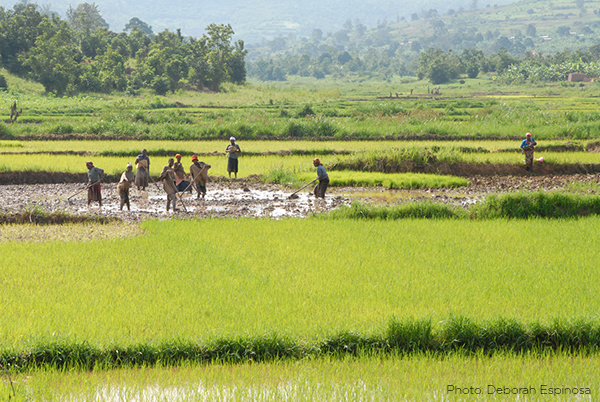
This blog was originally published by Skoll Foundation.
By Rachel McMonagle, Landesa Climate Change & Land Tenure Specialist
Around the world, indigenous and rural communities are among those least responsible for climate change, yet they are often the first to suffer from its impacts. Communities in rural areas are severely impacted by sudden and slow-onset effects of climate change, such as land and soil degradation and more frequent and intense floods. Effective solutions to confronting climate injustice, therefore, necessarily require engagement and partnership with Indigenous and rural populations, who are critical change agents in this global fight.
Indigenous peoples have a vast depth of ecological knowledge, which they have honed and passed down over generations, making them invaluable leaders in constructing climate mitigation and adaptation strategies and solutions. Furthermore, many Indigenous and rural communities reside on carbon-rich lands and forests that are vital for the health of our planet. Indigenous practices often serve a protective role over those lands.
As we recently marked World Desertification and Drought Day, it is important to note that land restoration is more critical than ever as the world endures and recovers from the impacts of the COVID-19 pandemic. Restoring degraded land not only revitalizes stressed ecosystems—it increases incomes, job creation, economic resilience, and food security. With Indigenous and local communities holding and managing between 50 and 65 percent of the world’s land, we cannot realize the benefits of land restoration without them.
Although Indigenous and rural communities are vital to the fight against climate change, in many countries these populations struggle to obtain formal rights over their land. This reality traps generations in a cycle of displacement, conflict, and poverty. Securing land rights for rightful landholders addresses poverty and climate change together.
Struggle for Land Rights
Insecure land rights place rural and Indigenous landowners’ land at risk to various methods of natural resource extraction, such as mining and logging. Additionally, without the stability that land rights bring, households and communities may not make long-term investments in their land. Consequently, rightful landowners are threatened with displacement as conflicts over increasingly scarce resources accelerate.
In turn, securing land rights can empower indigenous and rural communities to both protect the land on which their livelihoods are based, and make long-term investments that help improve carbon sequestration. When the stewards of these vital lands are confident that their land rights will be respected, they have greater incentive to invest in conservation practices such as soil restoration and tree planting, or implement climate-smart agriculture.
Indigenous and tribal communities’ relationship with land and nature is often romanticized; however, a recent report from the Food and Agricultural Organization (FAO) provides evidence-based insights into how indigenous cultures and traditional knowledge help protect forests. Given secure land rights, indigenous peoples can better implement traditional knowledge and practices that help sustainably manage forests.
Indigenous Forest Protection
In Peru, evidence suggests that land titling of Indigenous territories significantly reduces forest disturbance and clearance. In Brazil, areas where Indigenous residents were granted full collective property rights over their lands experienced markedly (66%) lower deforestation rates between 1982 and 2016.
Protecting our world’s forests is vital to mitigating climate change. Well-managed forests act as carbon sinks, trapping excess carbon from the earth’s atmosphere and yielding a myriad of long-term economic and climate-related benefits. At the same time, these healthier ecosystems can better support rural communities’ livelihoods and sustenance, reducing displacement, food insecurity, and poverty in the long-term.
Land rights provide a foundation to stand on— security that can increase the ability of indigenous and rural communities to restore and protect vulnerable ecosystems of global significance, advancing climate mitigation and adaptation through investment in climate-smart practices. Most importantly, by securing land rights for Indigenous and rural populations, we can activate some of the world’s most valuable change agents in the fight against climate change.
